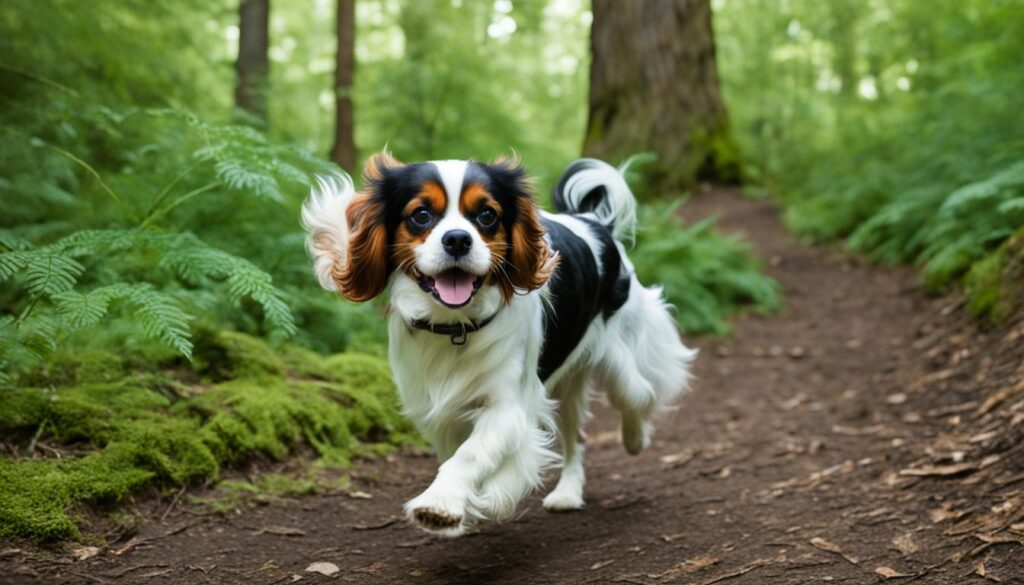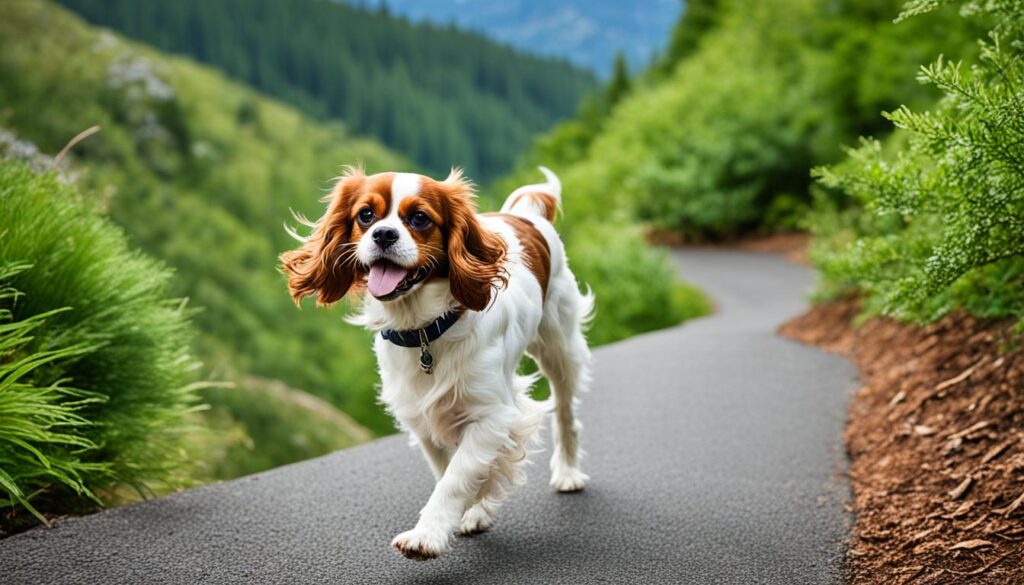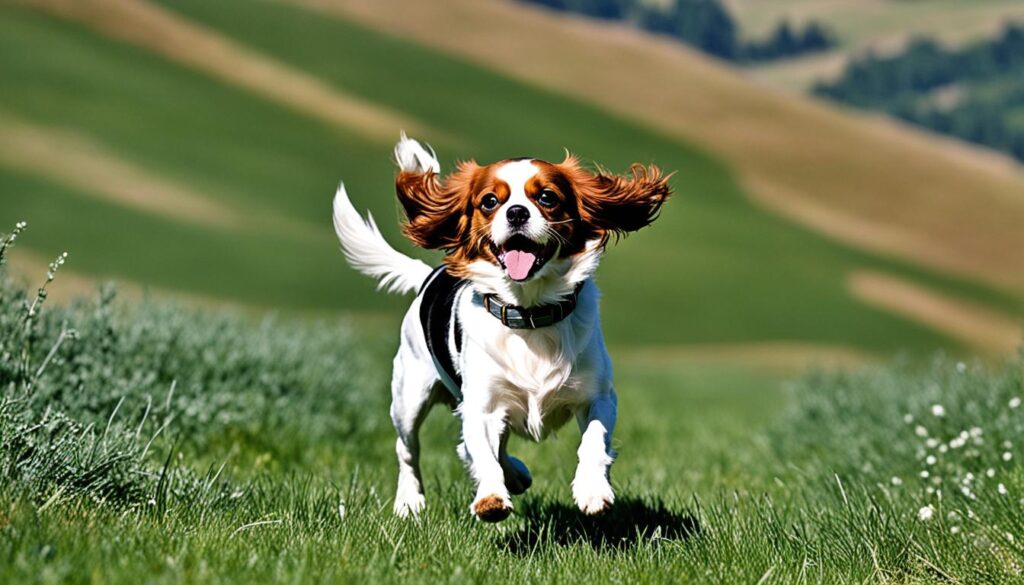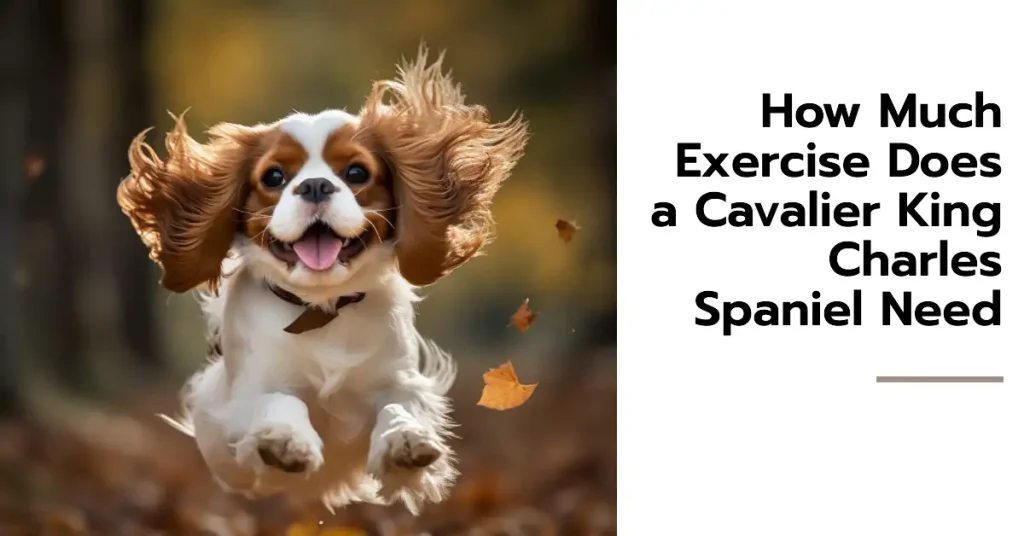Table of Contents
A Cavalier King Charles Spaniel can typically walk up to 3 to 5 miles comfortably, depending on their health and fitness level. It’s important to start with shorter walks and gradually increase the distance, observing how the dog responds, as these spaniels are prone to certain health issues like heart problems that can affect their endurance.
We will discuss this topic further in the following paragraphs…
Cavalier King Charles Spaniels are a popular breed known for their charming personality and adorable appearance. Many dog owners wonder how far their Cavalier can walk and what their exercise needs are. In this article, we will explore the capabilities of a Cavalier King Charles Spaniel when it comes to walking distances and provide insights into their exercise requirements. By understanding these factors, you can ensure that your furry friend gets the right amount of physical activity for their overall health and well-being.
Key Takeaways:
- Cavalier King Charles Spaniels have varying walking limits based on their physical characteristics and health concerns
- Regular exercise is important for the health and well-being of a Cavalier King Charles Spaniel
- It is essential to strike a balance between walking and other forms of physical activity for a Cavalier King Charles Spaniel
- Individual preferences and abilities should be considered when determining the walking distance for a Cavalier King Charles Spaniel
- Recognizing signs of fatigue and overexertion is crucial during walks with a Cavalier King Charles Spaniel
Understanding a Cavalier King Charles Spaniel’s Capabilities
Before discussing how far a Cavalier King Charles Spaniel can walk, it’s important to understand the factors that can impact their stamina and exercise capabilities.
Physical Characteristics Impacting Canine Stamina
The physical characteristics of a Cavalier King Charles Spaniel can influence their endurance and stamina. This breed is typically small in size, weighing between 13 to 18 pounds (5.9 to 8.2 kilograms), with an average height of 12 to 13 inches (30 to 33 centimeters). Their compact build and short legs may affect their ability to walk long distances or engage in strenuous physical activities.
Common Health Concerns Affecting Exercise
Cavalier King Charles Spaniels are prone to certain health issues that can impact their exercise abilities. Two common concerns are mitral valve disease and syringomyelia. Mitral valve disease affects the heart’s function and can lead to fatigue and reduced stamina. Syringomyelia is a neurological condition that can cause pain and discomfort, making it difficult for the dog to engage in prolonged physical activities.
Estimating Comparable Distances for Different Breeds
To understand the walking capabilities of a Cavalier King Charles Spaniel, it can be helpful to compare their walking distances with other dog breeds. Each breed has its own unique physical characteristics, exercise limitations, and endurance levels. By considering these factors, you can gain a better perspective on the walking distances that are suitable for Cavaliers and adjust their exercise routines accordingly.
Exercise Needs for Cavalier King Charles Spaniel
To meet the exercise needs of a Cavalier King Charles Spaniel, it is important to understand their daily exercise requirements. This breed thrives on regular physical activity to maintain their overall health and well-being. While they may have a small stature, Cavaliers are energetic and enjoy being active.
Defining Adequate Daily Exercise Requirements
Adequate daily exercise is essential for a Cavalier King Charles Spaniel to prevent weight gain, promote cardiovascular health, and stimulate their mind. The exercise requirements for this breed may vary depending on factors such as age, health, and individual energy levels.
How Much Exercise Does a Cavalier King Charles Spaniel Need?
The recommended exercise duration for a Cavalier King Charles Spaniel is around 30 minutes to 1 hour per day. This exercise can be split into multiple sessions to accommodate their energy levels and preferences. It is important to keep in mind that individual Cavaliers may have unique exercise needs, so it is essential to monitor their behavior and adjust accordingly.
Balancing Walks with Other Forms of Activity
While walks are an important part of a Cavalier’s exercise routine, it is equally important to engage them in other forms of physical activity. This can include interactive play, agility training, or mental stimulation exercises. Balancing different activities means you can provide a well-rounded exercise experience for your Cavalier King Charles Spaniel.

| Exercise Type | Duration |
|---|---|
| Walks | 30 minutes to 1 hour |
| Interactive Play | 15-30 minutes |
| Agility Training | 15-30 minutes |
| Mental Stimulation Exercises | 15-30 minutes |
Table: Recommended durations for various exercise activities for a Cavalier King Charles Spaniel.
How Far Can a Cavalier King Charles Spaniel Walk
When it comes to determining the maximum walking distance for a Cavalier King Charles Spaniel, several factors need to be considered. Their physical capabilities, exercise needs, and any potential health concerns play a crucial role in understanding their walking limits.
Cavaliers are a small to medium-sized breed known for their friendly and affectionate nature. While they may be eager to accompany you on walks, it’s important to be mindful of their limitations.
As a general guideline, the optimal walking duration for a Cavalier King Charles Spaniel is around 30 minutes to an hour, depending on their age, overall health, and fitness level. It’s crucial to observe their behavior during walks and adjust the distance and intensity accordingly.
It’s important to note that Cavaliers may have limitations due to their physical characteristics, such as their short legs and compact body structure. These factors can impact their stamina, making it necessary to avoid excessive or prolonged physical activity.
Additionally, certain health issues are prevalent in the Cavalier King Charles Spaniel breed, such as mitral valve disease and syringomyelia, which can further affect their exercise capabilities. It’s essential to consult with a veterinarian to understand any specific limitations or precautions that should be taken.
Assessing their physical condition, considering their exercise needs, and being mindful of any potential health concerns means you can determine the maximum walking distance that is suitable for your Cavalier King Charles Spaniel. Always prioritize their well-being and adjust their exercise routine accordingly to ensure they stay happy and healthy.

Customizing the Walking Experience for Your Cavalier
Every Cavalier King Charles Spaniel is unique, and it is important to customize the walking experience to meet their specific needs and preferences. Understanding and addressing individual dog needs and preferences can enhance the walking experience for both you and your Cavalier.
Assessing Individual Dog Needs and Preferences
To customize the walking experience, start by assessing your Cavalier’s individual needs and preferences. Consider factors such as their age, energy level, and overall health condition. Some Cavaliers may require more frequent or longer walks, while others may prefer shorter, more leisurely strolls. Observing your dog’s behavior and response during walks will provide important insights into their preferences and comfort.
Furthermore, it’s essential to consider any potential physical limitations or health concerns that may affect your Cavalier’s walking ability. For example, if your dog has a history of joint issues, you may need to adjust the walking distance to avoid discomfort or excessive strain. Consulting with your veterinarian can provide valuable guidance and ensure that you tailor the walking experience appropriately.
Graduating Walking Distances: Tips for Safety and Enjoyment
Instead of abruptly increasing the walking distance, it’s recommended to gradually build up your Cavalier’s endurance over time. Begin with shorter walks and progressively increase the distance as your dog becomes more comfortable and accustomed to regular exercise. This approach allows their muscles and joints to adapt gradually, minimizing the risk of fatigue or injury.
When planning longer walks, consider the terrain and weather conditions. A Cavalier may find it more challenging to walk on uneven or rough surfaces, so choose routes that are suitable for their comfort and safety. Additionally, avoid walking during extreme temperatures, as Cavaliers are prone to overheating. Opt for early morning or evening walks when the weather is cooler.
Recognizing Signs of Fatigue and Overexertion During Walks
While it’s important to provide enough exercise for your Cavalier, it’s equally crucial to be aware of their physical limits and signs of fatigue. Watch for indications such as excessive panting, lagging behind, or reluctance to continue walking. These signs may indicate that your dog is tired and needs a break or a shorter walk.
Pay attention to your Cavalier’s body language during walks. If they are excessively panting, staggering, or showing any signs of distress, it is essential to stop immediately, find a shady spot, and offer water. Continuing to push your dog beyond their limits can lead to overexertion and potential health risks.
Overall, prioritizing the safety and well-being of your Cavalier King Charles Spaniel during walks will ensure an enjoyable and beneficial experience for both you and your furry companion.
Conclusion
Understanding the walking distance capabilities of a Cavalier King Charles Spaniel is vital to meet their exercise needs. Taking into account their physical characteristics, health concerns, and individual preferences means you can determine the optimal walking distance for your beloved furry companion. Regular exercise, combined with other forms of physical activity, is crucial for their overall health and happiness.
Remember to observe your Cavalier during walks and pay attention to any signs of fatigue or overexertion. Dogs communicate through their body language, and it is essential to adjust the walking distance accordingly to keep them safe and content. Customizing the walking experience to their specific needs and preferences will make every walk enjoyable for both you and your Cavalier.
Providing the right amount of exercise means you are not only ensuring their physical well-being but also their mental stimulation. Cavaliers thrive on interactions with their human companions, and walking together is a fantastic opportunity to strengthen the bond. So lace up your shoes, grab your Cavalier’s leash, and embark on many wonderful walks together.



